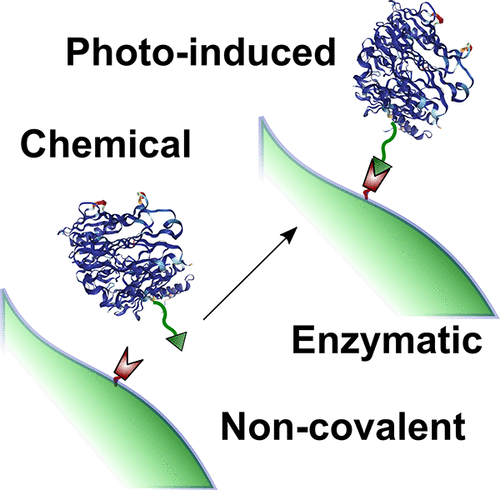当前位置:
X-MOL 学术
›
Chem. Rev.
›
论文详情
Our official English website, www.x-mol.net, welcomes your feedback! (Note: you will need to create a separate account there.)
Achieving Controlled Biomolecule-Biomaterial Conjugation.
Chemical Reviews ( IF 62.1 ) Pub Date : 2018-07-24 , DOI: 10.1021/acs.chemrev.8b00253 Christopher D Spicer 1 , E Thomas Pashuck 2 , Molly M Stevens 1, 3
Chemical Reviews ( IF 62.1 ) Pub Date : 2018-07-24 , DOI: 10.1021/acs.chemrev.8b00253 Christopher D Spicer 1 , E Thomas Pashuck 2 , Molly M Stevens 1, 3
Affiliation

|
The conjugation of biomolecules can impart materials with the bioactivity necessary to modulate specific cell behaviors. While the biological roles of particular polypeptide, oligonucleotide, and glycan structures have been extensively reviewed, along with the influence of attachment on material structure and function, the key role played by the conjugation strategy in determining activity is often overlooked. In this review, we focus on the chemistry of biomolecule conjugation and provide a comprehensive overview of the key strategies for achieving controlled biomaterial functionalization. No universal method exists to provide optimal attachment, and here we will discuss both the relative advantages and disadvantages of each technique. In doing so, we highlight the importance of carefully considering the impact and suitability of a particular technique during biomaterial design.
中文翻译:

实现受控的生物分子-生物材料结合。
生物分子的缀合可以赋予材料调节特定细胞行为所需的生物活性。虽然特定多肽、寡核苷酸和聚糖结构的生物学作用以及附着对材料结构和功能的影响已经被广泛回顾,但缀合策略在确定活性中所发挥的关键作用常常被忽视。在这篇综述中,我们重点关注生物分子共轭化学,并全面概述实现受控生物材料功能化的关键策略。不存在提供最佳附着的通用方法,在这里我们将讨论每种技术的相对优点和缺点。在此过程中,我们强调了在生物材料设计过程中仔细考虑特定技术的影响和适用性的重要性。
更新日期:2018-07-24
中文翻译:

实现受控的生物分子-生物材料结合。
生物分子的缀合可以赋予材料调节特定细胞行为所需的生物活性。虽然特定多肽、寡核苷酸和聚糖结构的生物学作用以及附着对材料结构和功能的影响已经被广泛回顾,但缀合策略在确定活性中所发挥的关键作用常常被忽视。在这篇综述中,我们重点关注生物分子共轭化学,并全面概述实现受控生物材料功能化的关键策略。不存在提供最佳附着的通用方法,在这里我们将讨论每种技术的相对优点和缺点。在此过程中,我们强调了在生物材料设计过程中仔细考虑特定技术的影响和适用性的重要性。



























 京公网安备 11010802027423号
京公网安备 11010802027423号